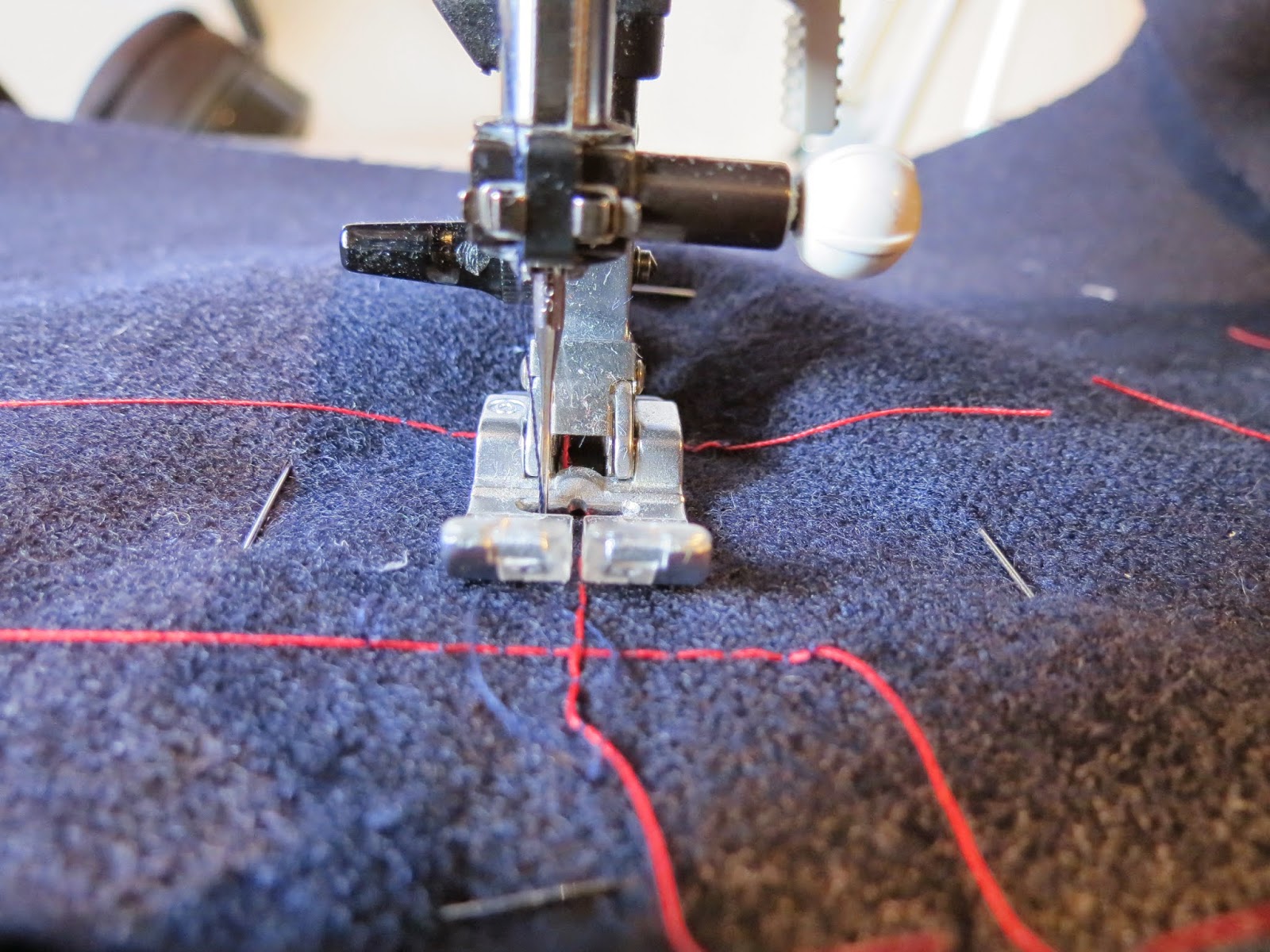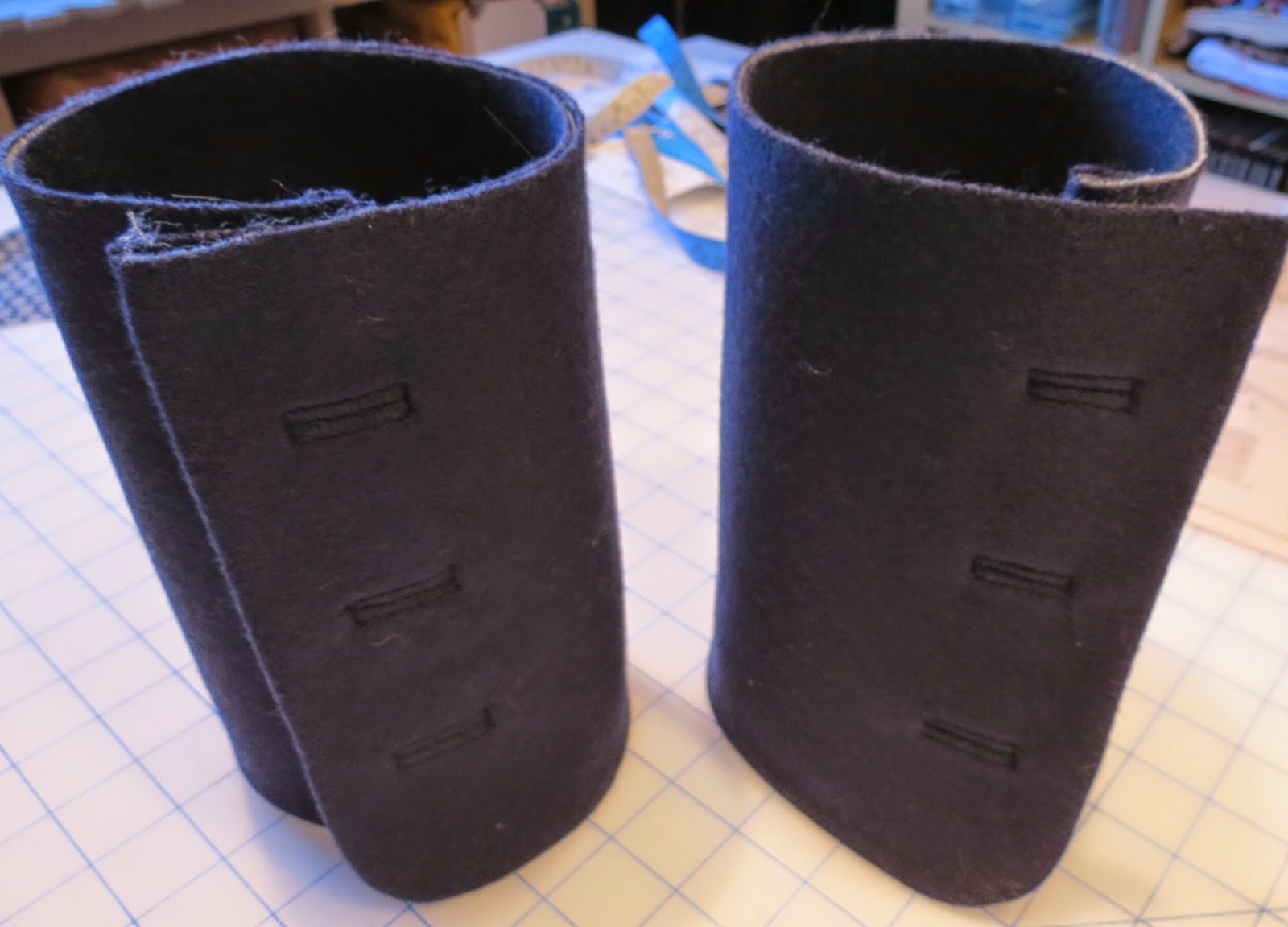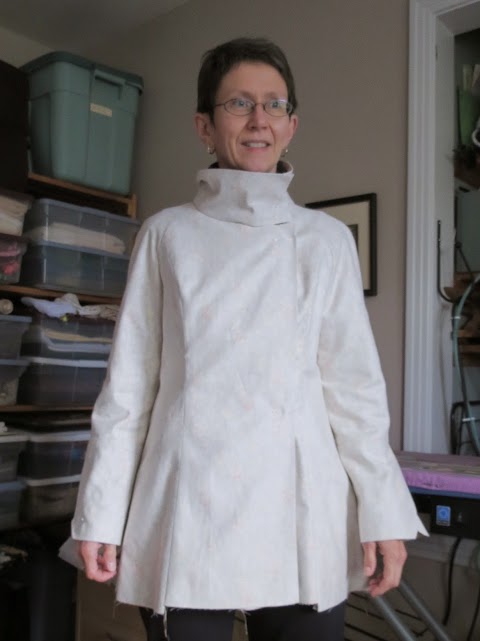It isn't a hard pattern. The body went together really quickly, once I got past all those buttonholes (6 down the front, 2 on the collar, 2 on the pocket flaps).
And then I decided to do 3 on each sleeve, because I am a glutton for punishment. And I was on a roll. If you are counting, that's a total of 18 bound buttonholes.
They will not all be working buttonholes. When you get to a certain state of peevish sewing perfectionism, the wobbliness of shank buttons that sit up top on the fashion fabric with nothing to do, compared to the sturdy firm seating of a button doing the work of holding layers of coat together starts to bug you...
The non-working cuff buttonholes will allow the shanks of the buttons to sink in so they are at the same depth relative to the outer coat fabric as the working buttonholes. I decided to solve the same problem on the coat front by making tiny machine buttonholes, just big enough to contain the shanks. Claudine recommended just sinking the shank into a hole made by an awl to avoid this pesky problem. My "solution" is waaaay too complicated but I didn't read her post until after I'd embarked on my fool's errand.
Some of those buttonholes (8 if you are counting) need to actually work, so they needed to be faced. I used silk organza patches.

 First, I sewed the long CF seam to attach the facing to the coat front. Then I marked the location of each buttonhole (with pins and measuring tape to triple check). Then I marked them in a contrasting colour of thread and sewed a little box (1.5mm stitch length) for each one. As you can see (at right) I have the needle set to the left of centre and am using the marked CL of the buttonhole as a guide.
First, I sewed the long CF seam to attach the facing to the coat front. Then I marked the location of each buttonhole (with pins and measuring tape to triple check). Then I marked them in a contrasting colour of thread and sewed a little box (1.5mm stitch length) for each one. As you can see (at right) I have the needle set to the left of centre and am using the marked CL of the buttonhole as a guide. Then carefully clip open each little window.
Then carefully clip open each little window. And turn them and press.
I am hand sewing these windows over the buttonholes and pressing some more.
Luckily this wool is thick and forgiving so my stitches sink right in and are invisible.
Unluckily this wool is thick and my fingers hurt after doing a few. One more left and then I'm finished with these. Then I can move on to more interesting and less painful sewing tasks, like assembling the lining and interlining.
 |
| Partially assembled, not cleaned (yet) |
The lady on the cover of the manual makes it look pretty easy...




0 Comments